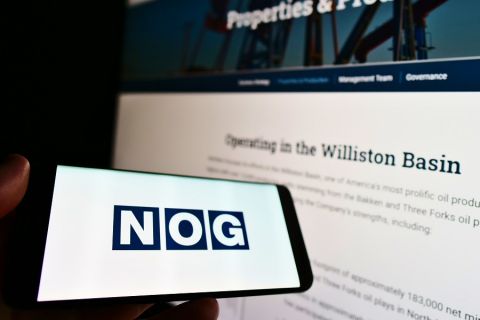
(Source: HartEnergy.com; Alexander Supertramp, bht2000/Shutterstock.com)
Pipeline compliance is a combinatorial regulatory requirement that hinges on operators’ performance in multiple areas of daily operations and administration.
From maintenance and testing to recordkeeping and audits, operators often underestimate how complex and time consuming the path toward compliance will be. Even the most technically compliant operators can find themselves struggling to prove compliance when records are unavailable, and time is not on their side.
When it comes down to it, operators must balance several operational areas to hit the mark for compliance, and the industry is quickly learning that implementing necessary practices via software solutions helps to instill internal and external confidence in the accuracy and completeness of compliance programs.
Keys to Compliance: Resource Management and Recordkeeping
Compliance is more than hydro tests and manuals—it is the effect of inspections, preventative and corrective maintenance, integrity assessments, consistent documentation and much more. To accomplish compliant operations, however, operators must have an intimate understanding of their processes to better determine how compliance can more efficiently and dependably be achieved. Among the practices that operators find most influential in the compliance arena are resource management and documentation, both necessities for safe and productive operations.
When it comes to maintenance, testing and inspections, resource management is critical. When added to daily operations, simple compliance requirements can easily be overlooked or set aside to make time for critical field or commercial operational needs. In these instances, operators can easily find themselves coming up short on required maintenance or testing with little time to meet regulatory deadlines. To avoid such scenarios, operators must keep track of compliance schedules as they relate to individual assets. For operators juggling hundreds of assets and thousands of miles of pipe, the task can quickly become overwhelming.
Even if operators manage their time well and keep a balance between competing priorities, detailed recordkeeping can pose an entirely different but equal problem. Documentation is the great equalizer when it comes to compliance. The concept of requiring evidence for even the simplest of statements applies here—if there is no documentation to prove it, it didn’t happen as far as regulatory agencies are concerned.
Well-orchestrated recordkeeping is timely, verifiable, and complete (TVC) to ease the burden when records are required, but that isn’t always the case for well-intentioned operators. Misfiled records, incomplete documentation and inaccessible information can bite an operator when they’re not looking and leave an otherwise compliant operator with no evidence of their compliance.
Three Common Errors in Compliance Management
When resource management or documentation—or in the worst-case scenario, both—are bungled, operators can find themselves in the hot seat. This often occurs in the industry as three common errors in the compliance lifecycle: neglecting to perform compliance activities per a scheduled deadline, filing incomplete data and improperly storing records for retrieval. While these compliance errors can have severe consequences, they often result from complacency or miscommunications.
A common error in pipeline operations is poor scheduling of compliance activities, leading to rushed inspections, cut corners or insufficient documentation. The complication for operators comes not necessarily in planning such compliance activities but doing it in a way that keeps all assets on schedule with regulatory requirements. If a single asset’s activity is overlooked, it creates the potential for an avalanche of issues. As deadlines loom, daily operations must be interrupted to meet requirements, while rushed timelines often lead to higher costs. Furthermore, if an operator misses a deadline altogether, the cost of fines can add up dramatically.
Compliance errors also come in the form of incomplete data. Some compliance requirements can be met with a single form provided by a contractor, but even such documentation can fail to meet compliance if it is incomplete or not correctly filled out. The potential for issues is compounded with each new type of form or record that must be added to show compliance. As with scheduling compliance activities, reviewing compliance documentation can be a time-consuming process and can lead to a dangerous situation if not properly addressed.
Additionally, operators might find that issues with their record storage can lead to compliance errors as well. Documentation must be accessible when audits occur and for unplanned emergencies or incidents, and most operators will feel somewhat confident in their recordkeeping processes. Unfortunately, the more departments and personnel that are involved with the process or that have access to the system, the more likely it is that operators will experience issues in recordkeeping. While a mislabeled file might sound like a minor issue, when it comes to locating critical records during an audit, a missing document can lead to violations that otherwise could have been avoided.
Strategies for Avoiding Compliance Mistakes
When it comes to managing compliance, there are three strategies operators can implement to avoid finding themselves stuck in the mud. Focusing on maintaining the highest level of compliance support with the operator’s efficiency in mind, these strategies highlight the practices of resource management while emphasizing the significance of the compliance process.
These strategies include:
- Establishing a detailed compliance schedule;
- Implementing a process for TVC documentation; and
- Integrating a records management process.
The first strategy is the development of a timely and thorough compliance schedule to keep track of which assets require which type of compliance action and when. Such a schedule must consider not only the kind of work that must be performed but also the time necessary to do so properly when it comes to planning and conducting compliance activities.
To assist operators in planning, a schedule should look at least a full year ahead; however, some aspects of compliance will require planning three to five years out for standards that have longer timeframes between renewal. By utilizing a compliance schedule that works with current regulatory timeframes, operators can understand better how to assign work hours and budget for upcoming compliance projects with minimal impact on daily operations. Lastly, a compliance schedule must also act as a warning system to assist operators in avoiding potential violations. Indications of upcoming deadlines or requirements must be identifiable and timed to allow operators to react before they find themselves in violation.
The second strategy is the implementation of a documentation process that achieves TVC documentation and therefore captures all necessary information. Incomplete documentation neither supports nor promotes compliance and can lead to regulatory violations as well as safety concerns. Operators must have in place a process for reviewing records to ensure they are complete. Not all records come from the same department, though they are likely to come together as a single packet during a compliance review; this means that different internal processes are often involved in reviewing and approving documentation.
By implementing a consistent record review process, operators can verify that their documentation contains all required information before it is requested during an audit. The process is likely to be an extension of existing internal document control processes, such as that captured by the management of change process; however, operators must understand that not all existing internal processes are created equal. While the review of documentation for compliance requirements can be combined with other review processes, compliance departments must be vigilant in ensuring all necessary information is captured in the process.
The final, but no less critical strategy is the integration of a records management process to ensure all records are properly stored and accessible. While every operator has a method for storing and retrieving records, oversights and inconsistencies in the process can lead to missing or irretrievable records. This can be a major headache for operators who operate older assets where information might have wandered off over the years and for larger operators who have acquired assets and were not provided with complete documentation upon acquisition. Weeding through existing records, however they are stored—on-site in storage rooms, at a corporate location, or with a third-party document storage facility—can be an extensive process that demands hundreds of man-hours in multiple departments. Nonetheless, operators are responsible for knowing what documentation they have and what records are missing.
Moreover, operators might struggle to locate records that are decades old to trace current documentation to original files. Still, that situation is minor compared to an operator who has misfiled the most recent hydrostatic test results. Record management is further complicated by the industry’s current transition to digital storage, leaving many operators utilizing a combination of hardcopy and digital files, with the most recent documentation often stored on local servers and organized by an internal file directory. It doesn’t take an IT professional to understand the issues that can come from a shared file directory. Inconsistent naming conventions, varying file structures, and permission restrictions create an environment ripe for inaccessible records. Operators must implement a process for referencing records and providing quick and consistent access to documentation.
A Software Solution for Consistent Compliance
The common errors we’ve discussed are avoidable if operators take measures to implement proper processes to address their compliance and recordkeeping environment. While addressing the issues manually might appear to be the simplest answer, operators will discover that the time required to design and implement such processes will be extensive. Not to mention the overhead that will come with the work hours that must be dedicated to internal training, documentation and testing before full implementation can be achieved. Top this off with the potential for ongoing issues if a process doesn’t fully capture an operator’s compliance needs, and it is easy to see why many operators are looking elsewhere for a solution.
Tightening the relationship between efficiency and effectiveness, technology continues to provide the oil and gas industry with opportunities to redefine its processes. That’s why it is no surprise that a solution to compliance management has come in the form of customizable software designed to accommodate operators’ compliance objectives. Such solutions often provide operators with a compliance-focused module for scheduling compliance activities with regulatory deadlines in mind as well as offering storage to digital records for maintaining existing documentation and incorporating any new documents that must be added.
Compliance management via software aids operators in managing a variety of factors to create a streamlined process, thereby sidestepping the pitfalls that often accompany the traditional method of separating compliance scheduling and records management into separate silos.
One such comprehensive solution for pipeline compliance is SafePipe. This pipeline safety documentation software is explicitly designed for scheduling and records management, exhibiting the power that is available in advanced technology for pipeline operations. SafePipe offers pre-defined modules that allow operators to designate the types of compliance they must manage to customize their solution. Operators can create and store fact sheets for each pipeline as well as upload and store compliance, inspections, and construction documentation for a comprehensive records database that is geared toward compliance, allowing operators to centralize documentation for easy reference and quick access.
SafePipe also addresses compliance schedules with a visual approach to enhance operator mindfulness. Color coding assists operators in identifying future, upcoming and past due inspections, which not only makes it easy to recognize potential issues but allows operators to perform a safety audit of their assets in minutes. Enhancing the operator experience, the software also automatically reminds operators via email of upcoming inspections and supports operators throughout the inspection process with downloadable inspections, maps, and reports to provide additional resources as needed. SafePipe also notifies operators of pending operator qualification renewals to keep personnel and contractors in compliance. With a streamlined compliance process, operators can view their compliance at a glance and dig down into the relationship of records and scheduling for a more informed understanding of where their assets stand.
Compliance Technology for Simpler Management
Keying in on the needs brought on by operational compliance, software solutions provide operators with tools for achieving defined metrics within a constantly evolving arena of operations. Operators will find that the transition to software-based compliance management is not only a more cost-effective method than traditional processes but provides a more robust environment for maintaining and documenting compliance for internal and external audits.
As regulatory requirements evolve, so must the industry’s efforts in simplifying complex processes, and software-based compliance management is the first step toward that objective concerning pipeline operations. No matter an operator’s current compliance situation, a modernized solution with practical data referencing via scheduling and records management can take them into an age of efficient compliance management and keep compliance information at their fingertips.
Whitney Vandiver is a compliance specialist with Houston-based NuGen Automation, a SCADA integration and IT /Network management company.
Recommended Reading
CEO: Coterra ‘Deeply Curious’ on M&A Amid E&P Consolidation Wave
2024-02-26 - Coterra Energy has yet to get in on the large-scale M&A wave sweeping across the Lower 48—but CEO Tom Jorden said Coterra is keeping an eye on acquisition opportunities.
Northern Oil and Gas Ups Dividend 18%, Updates Hedging
2024-02-09 - Northern Oil and Gas, which recently closed acquisitions in the Utica Shale and Delaware Basin, announced a $0.40 per share dividend.
The One Where EOG’s Stock Tanked
2024-02-23 - A rare earnings miss pushed the wildcatter’s stock down as much as 6%, while larger and smaller peers’ share prices were mostly unchanged. One analyst asked if EOG is like Narcissus.
E&P Earnings Season Proves Up Stronger Efficiencies, Profits
2024-04-04 - The 2024 outlook for E&Ps largely surprises to the upside with conservative budgets and steady volumes.
Chesapeake Slashing Drilling Activity, Output Amid Low NatGas Prices
2024-02-20 - With natural gas markets still oversupplied and commodity prices low, gas producer Chesapeake Energy plans to start cutting rigs and frac crews in March.





